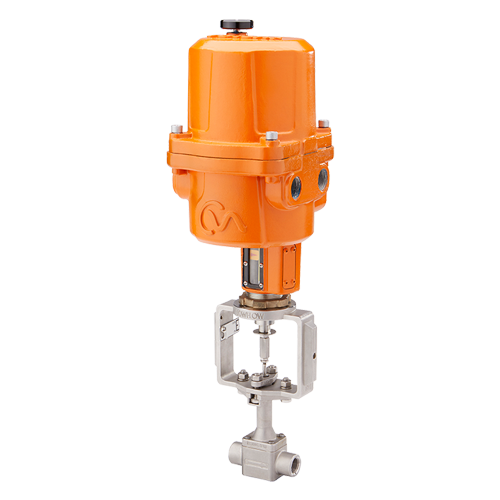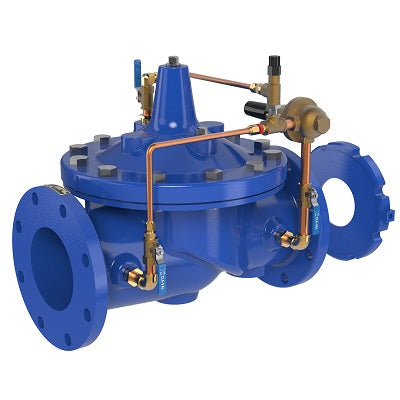Enhancing System Control with High-Performance Control Valves
Enhancing System Control with High-Performance Control Valves
Blog Article

Maximize Power Savings and Comfort With Advanced Structure Automation Controls
In the world of modern-day style and facility administration, the integration of innovative structure automation manages stands as an essential advancement. The merging of technology and sustainability has actually birthed a brand-new period where power effectiveness, convenience optimization, and functional streamlining are no much longer possible realities however distant goals. By utilizing the power of automation, buildings can adapt, respond, and advance in manner ins which were as soon as unimaginable. The potential for significant power savings and improved convenience is not just a pledge however a possibility waiting to be satisfied. This standard shift in structure monitoring holds the crucial to unlocking a world where ecological conscientiousness and occupant wellness sympathetically exist together within the walls of our frameworks.
Power Efficiency Perks
Energy performance benefits can dramatically decrease power consumption and functional expenses in buildings. By carrying out energy-efficient practices and modern technologies, structure proprietors and operators can attain significant cost savings while also contributing to environmental sustainability. Among the primary advantages of boosting energy efficiency in structures is the decrease of utility expenses. Energy-efficient systems, such as innovative building automation controls, can enhance making use of sources like heating, lighting, and cooling, causing lower power expenditures gradually.
Furthermore, boosted energy effectiveness can lengthen the life-span of building equipment and systems. By running more effectively, a/c systems, lighting fixture, and other building elements experience less damage, resulting in lowered maintenance and substitute expenses. Furthermore, energy-efficient structures usually regulate greater residential property values and rental rates, offering long-term economic benefits to proprietors.
In addition, energy effectiveness can improve passenger comfort and performance. Properly managed indoor settings with optimum lights and thermal problems create a more pleasant and conducive workspace, causing boosted employee contentment and efficiency. On the whole, the power efficiency advantages associated with sophisticated building automation controls are complex, encompassing expense savings, environmental stewardship, and owner well-being.
Improved Comfort Control
Enhancing convenience control in structure environments calls for an advanced assimilation of advanced automation systems for optimum passenger health. By using sophisticated building automation controls, facilities can customize the interior setting to meet the particular requirements and choices of owners. These systems make it possible for precise regulation of illumination, temperature, and ventilation, creating a comfy and effective environment. Passenger complete satisfaction and productivity are closely linked to thermal convenience, making it necessary to have systems in position that can adjust to altering problems in real-time.
By integrating these sophisticated controls, structures can not only enhance comfort yet additionally boost power performance by enhancing system procedures based on actual occupancy and usage patterns. Inevitably, focusing on passenger convenience through advanced automation systems leads to a much more pleasurable and healthier indoor environment.
Functional Efficiency Improvements

Additionally, the application of real-time surveillance and analytics tools allows structure drivers to determine power inefficiencies and operational abnormalities immediately. By continually checking power use patterns and system efficiency metrics, adjustments can be made in real-time to optimize energy usage and guarantee peak operational efficiency. control valves. In addition, integrating need response strategies right into building check this automation controls can further boost operational performance by dynamically adjusting energy usage based on grid conditions and pricing signals
Indoor Climate Optimization
Effective indoor environment optimization is an essential facet of structure automation controls, making sure owners' comfort and wellness while taking full advantage of power cost savings. By using innovative sensing units and controls, building automation systems can continuously keep an eye on and change temperature level, humidity degrees, air high quality, and air flow to create an optimum interior environment. Preserving comfy and regular conditions not just boosts occupant satisfaction yet also boosts productivity and overall health.
Indoor climate optimization likewise plays an essential duty in energy performance. By fine-tuning air conditioning, home heating, and ventilation systems based on real-time information and tenancy patterns, developing automation controls can significantly lower power usage - control valves. Applying methods such as demand-controlled ventilation and thermal zoning can aid lessen energy waste while making certain that each area of the structure gets the required conditioning.

Sustainable Setting Development
Structure automation manages not just enhance interior environment conditions for power effectiveness and occupant convenience however likewise lay the foundation for developing a sustainable atmosphere with calculated monitoring of sources and systems. By integrating innovative building automation modern technologies, such as sensors, actuators, and smart software, facilities can check and change energy use in real-time to minimize waste and decrease their carbon impact. These systems make it possible for predictive upkeep, recognizing potential problems prior to they rise and have a peek at this website optimizing devices efficiency to boost longevity and effectiveness.
Additionally, lasting setting creation extends beyond energy administration to incorporate water conservation, waste reduction, and indoor air high quality enhancement. Structure automation controls can control water use, spot leaks, and guarantee appropriate garbage disposal practices, adding to general sustainability efforts. In addition, by regulating and checking air flow and purification systems, these modern technologies boost owner wellness and performance while lowering power usage connected with a/c operations.
Final Thought
In final thought, advanced structure automation manages offer considerable benefits in terms of energy financial savings, comfort control, functional efficiency, indoor environment optimization, and developing a sustainable atmosphere. By executing these controls, buildings can attain optimum performance while decreasing power intake and enhancing resident comfort. It appears that the usage of sophisticated automation innovation is vital in improving building performance and creating an extra lasting future.
Energy effectiveness benefits can substantially decrease power intake and functional prices in structures. On the whole, the energy performance advantages linked with innovative building automation controls are complex, including price savings, environmental stewardship, and passenger wellness.
In addition, including demand action methods right into structure automation controls can even more enhance operational efficiency by dynamically readjusting energy use based on grid problems and prices signals.
Structure automation regulates not just enhance interior environment conditions for power effectiveness and passenger convenience yet likewise here are the findings lay the structure for developing a lasting setting via calculated administration of sources and systems.In conclusion, progressed structure automation regulates offer significant benefits in terms of energy savings, convenience control, functional effectiveness, interior climate optimization, and producing a lasting atmosphere.
Report this page